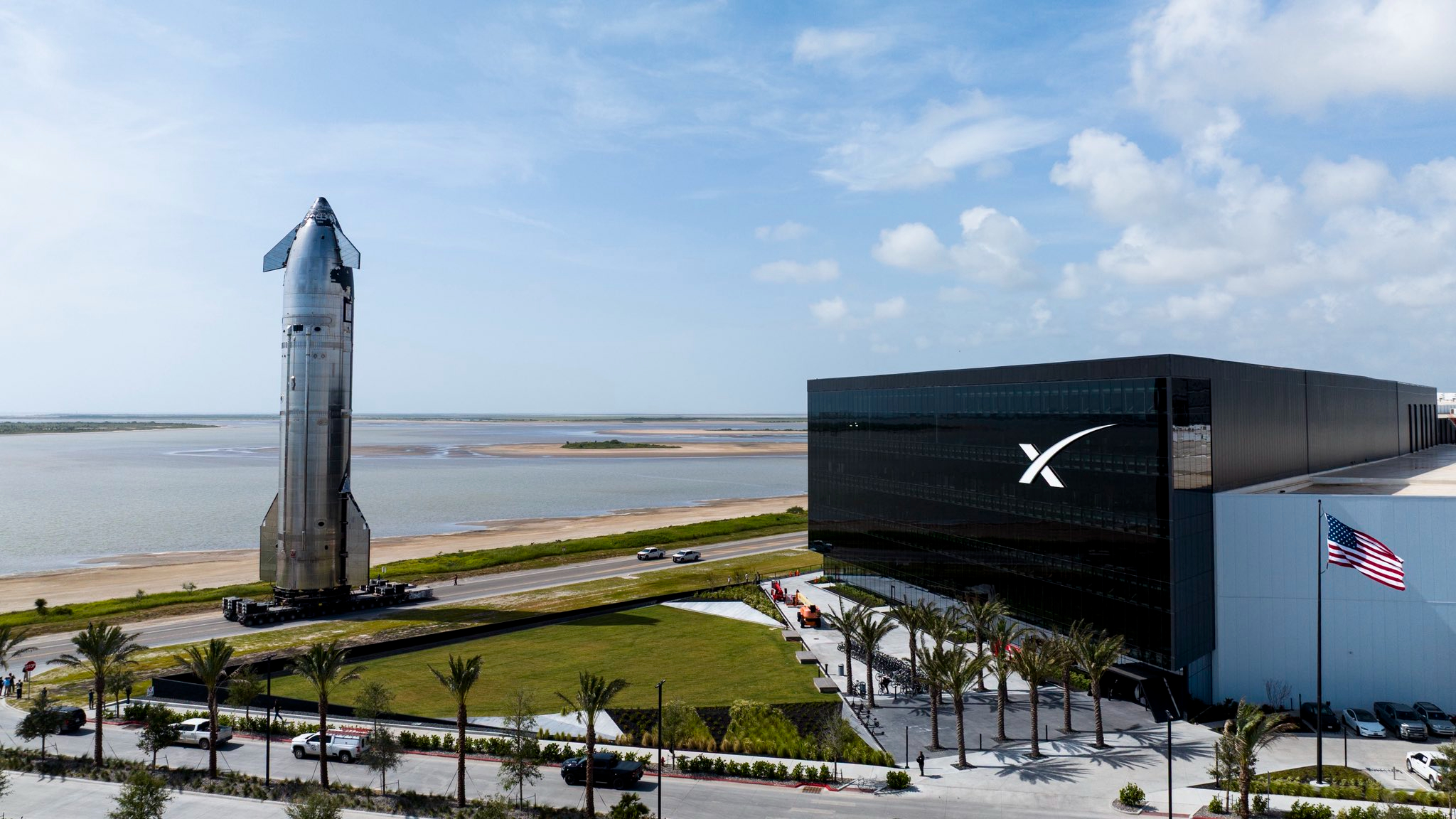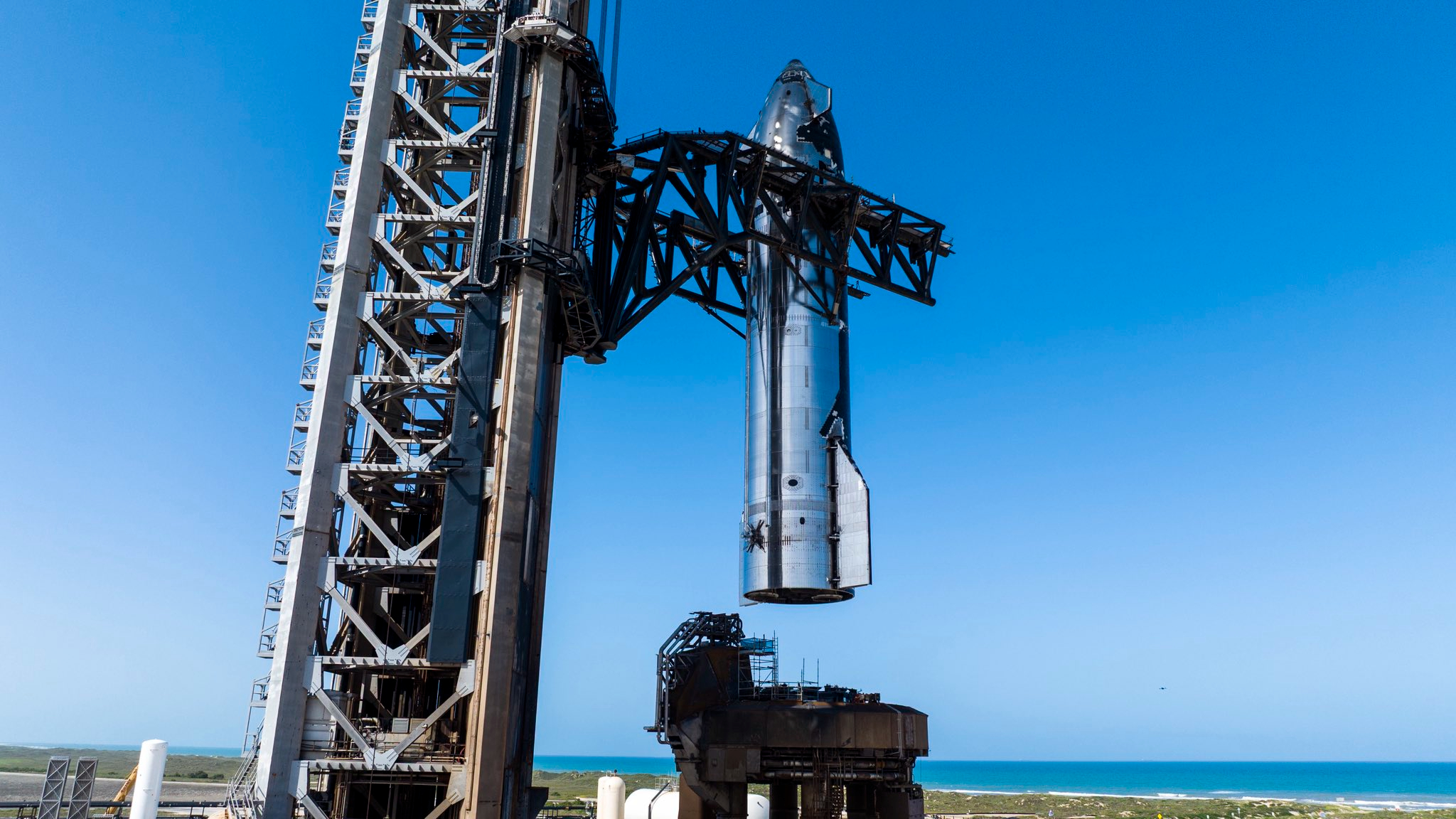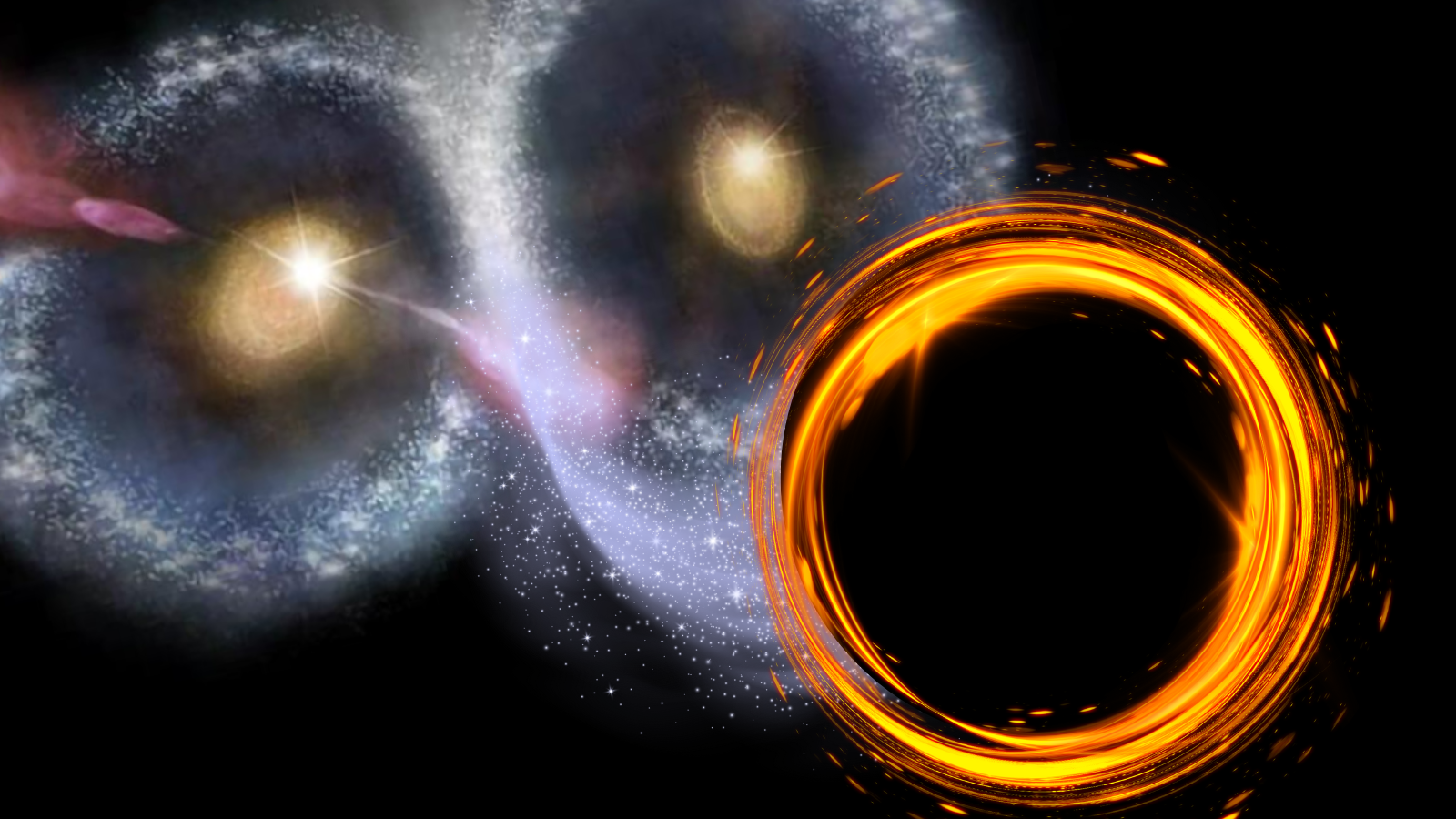SpaceX moves Starship to launch pad for testing ahead of Flight 10 (photos)

SpaceX has moved its Starship spacecraft to the launch pad for testing ahead of the vehicle's 10th flight, which is expected to take place next month from the company's Starbase site in South Texas.
SpaceX announced the milestone on Monday evening (July 28) in a post on X, which chronicled the journey of the 171-foot-tall (52-meter-tall) Starship upper stage in four photos.
SpaceX has not announced a target date for Flight 10, but it could happen soon: On July 14, company founder and CEO Elon Musk said the liftoff will occur in "about three weeks." On Monday, he provided an updated, yet more vague, prediction: "next month."

SpaceX is developing Starship — the biggest and most powerful rocket ever built — to help humanity colonize Mars and perform a number of other ambitious exploration feats.
The 400-foot-tall (122-meter-tall) vehicle consists of two elements, both of which are made of stainless steel and designed to be fully reusable: a giant booster called Super Heavy and an upper-stage spacecraft known as Starship, or "Ship" for short.
The Ship that just moved to the pad is the second SpaceX has prepped for Flight 10. The first one exploded on a test stand at Starbase on June 18 while gearing up for a static fire, a common prelaunch trial in which a rocket's engines are briefly ignited while the vehicle remains anchored to the ground.
The company quickly determined the likely cause of that "rapid unscheduled disassembly" — the failure of a pressurized nitrogen tank near Ship's nose.
Breaking space news, the latest updates on rocket launches, skywatching events and more!

All eyes will be on Ship during Flight 10, for the upper stage has had some problems: SpaceX lost the vehicle on the three most recent Starship flights, which took place this past January, March and May, respectively.
Super Heavy, on the other hand, aced both Flight 7 and Flight 8, boosting Ship successfully and then coming back to Starbase for a catch by the launch tower's "chopstick" arms.
SpaceX didn't try such a catch on Flight 9, but rather tried to bring the booster back for a splashdown in the Gulf of Mexico. That didn't quite happen; Super Heavy broke apart just after starting its landing burn.

Michael Wall is a Senior Space Writer with Space.com and joined the team in 2010. He primarily covers exoplanets, spaceflight and military space, but has been known to dabble in the space art beat. His book about the search for alien life, "Out There," was published on Nov. 13, 2018. Before becoming a science writer, Michael worked as a herpetologist and wildlife biologist. He has a Ph.D. in evolutionary biology from the University of Sydney, Australia, a bachelor's degree from the University of Arizona, and a graduate certificate in science writing from the University of California, Santa Cruz. To find out what his latest project is, you can follow Michael on Twitter.
You must confirm your public display name before commenting
Please logout and then login again, you will then be prompted to enter your display name.
